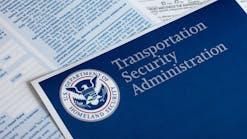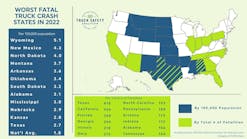ATA says ELD effective date marks new era of safety, efficiency for trucking
On Dcember 18, the American Trucking Associations welcomed the effective date of the long-awaited requirement for commercial truck drivers to record their hours of service electronically as a step forward for the industry.
“Electronic logging devices have been legislated, promulgated and litigated--with Congress voting three times in the past five years in favor of this requirement and a federal court rejecting a challenge to the rule,” said ATA President and Chief Executive Officer Chris Spear. “The time has finally come to retire decades-old, burdensome paper logs that consume countless hours and are susceptible to fraud and put the safety of all motorists first. The benefits of this rule exceed the costs by more than $1 billion, making it a rule the ATA can firmly support and easily adopt. Today marks the start of a new era of safety and efficiency for our industry and we thank the champions in the Department of Transportation and Congress who have gotten us to this point.”
A rule requiring the use of an electronic logging device was first proposed in 2007, and was finalized in 2010--but the rule that went into effect December 18 was the result of bipartisan congressional action in the 2012 highway bill: MAP-21.
“We firmly believe that America’s truck drivers--if they were operating legally within the hours-of-service rules before today--will see tremendous benefits in using an ELD,” Spear Said. “Whether in reduced crashes, less time spent on paperwork, or in fewer errors in their logbooks. The data, as well as our members’ experiences, with this technology tells us that ELDs reduce crashes, increase compliance with the hours rules, and ultimately benefit our industry and the motoring public.”
ATA Executive Vice-President for Advocacy Bill Sullivan Added: With the support of law enforcement groups and trucking industry groups like ATA that are concerned with the welfare of the motoring public, this requirement is now in the rearview mirror and we can turn our attention to other important safety matters surrounding the hours-of-service rules. Having good data from the use of ELDs will make it easier for ATA to make the case for technical corrections to the hours-of-service rules in areas like detention time, split sleeper berth and more. Simply put, with this requirement in place we can now move forward to a safer, better future for our industry.”








